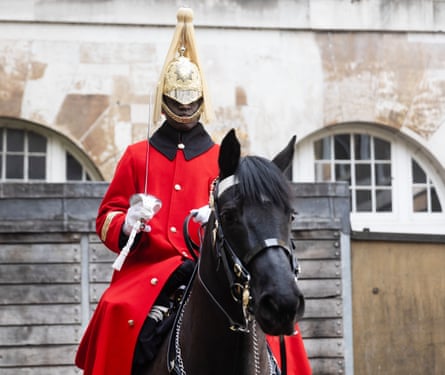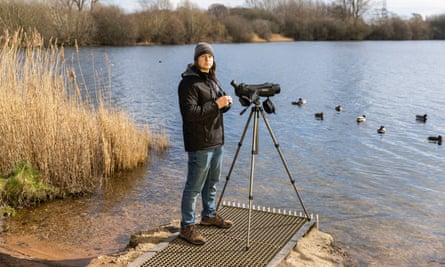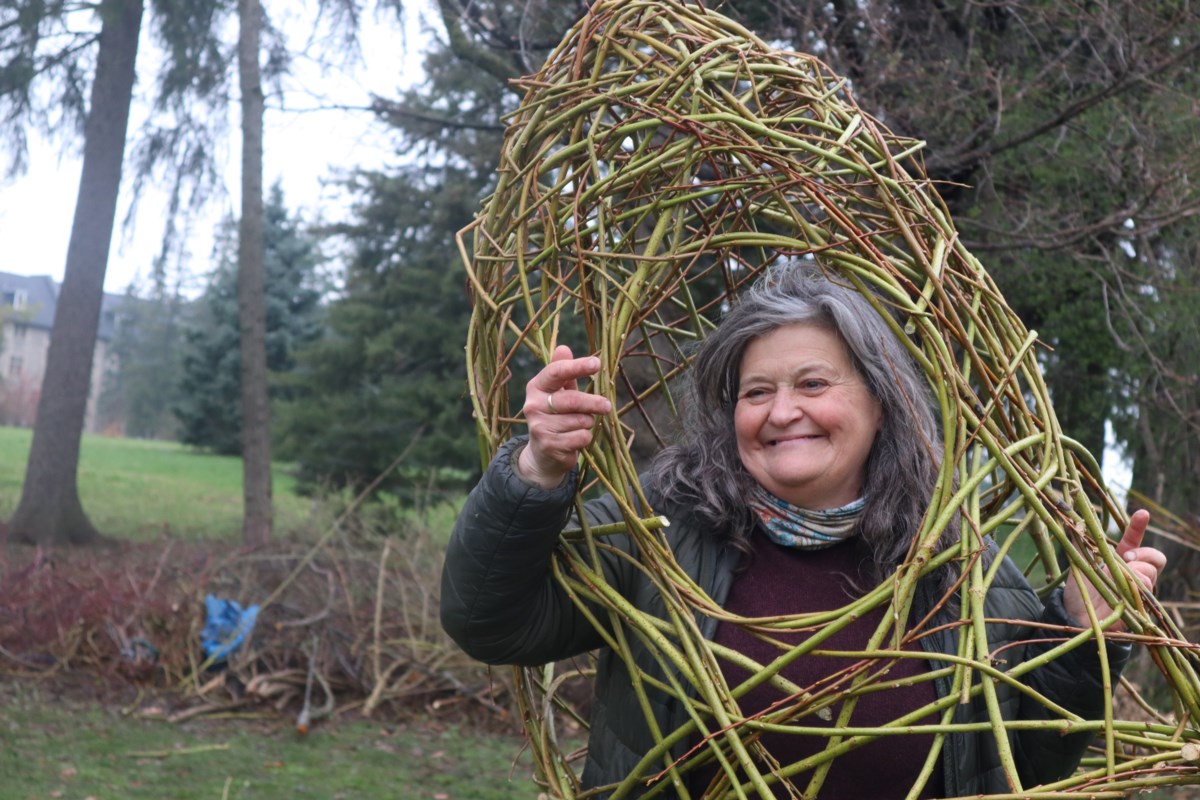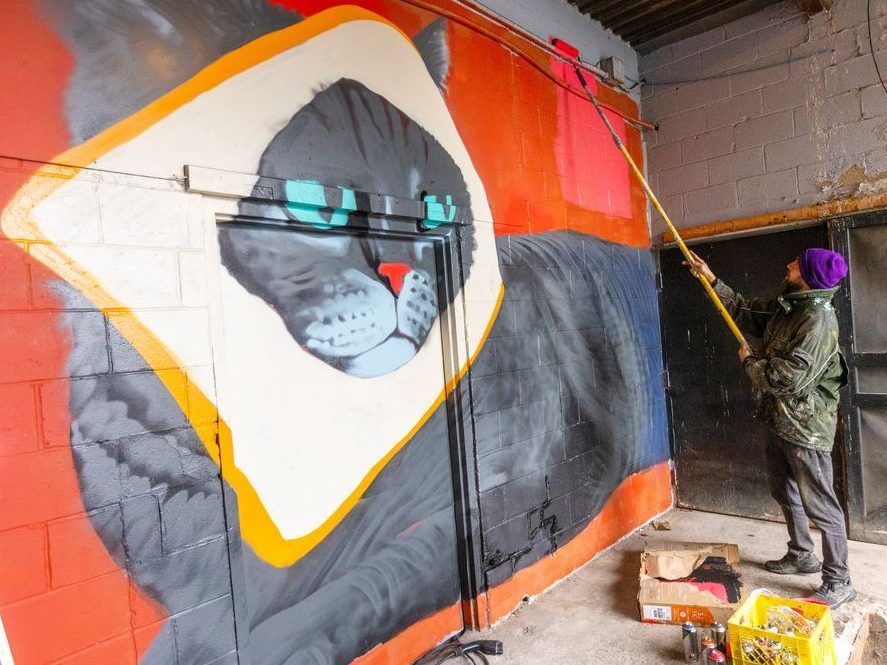Art
‘Standing still is an art’: how to focus, by those who know – from heart surgeons to living statues
|
|
The living statue
Izabela Radcliffe, 40
What you see is stillness, but I’m incredibly busy. I’m no longer Izabela. I can’t be thinking about what my kids are having for dinner. My awareness of the environment and audience, and how I interact with them, is everything. If my mind wanders, the spell is broken.
There are five key skills. First: connect to your breathing, being aware of how it feels inside your body and trying to breathe calmly and from the diaphragm. Second: connect to your body, maintaining awareness of every part of it, and how it feels. Third: be aware of everything around you, all the time. Fourth: find one specific spot on which to focus your eyes – if your gaze travels around, you spoil the illusion. Fifth: know and embody your character. When I am Marie Curie’s statue, I try to think as Marie Curie. When I move into a new position, say, looking at the little bottle I hold, I’ll think: “Look at this chemical reaction. What is going on in here?”, then freeze in that moment of thought so my face coveys the expression of intrigue.
You do meet challenges. Once I used a hair gel under my wig that smelled sweet and attracted bees. A runny nose is also problematic. Once or twice a month a teenager will try to scare me into moving by shouting “boo”.
I do a lot of yoga, running and stretching to prepare my body. Classic Iyengar yoga helps train awareness of the body, as well as fitness. You scan your body – what position your feet, belly, hands and more are in – before holding a pose. I have to be careful that each body part carries a balanced load. Whatever position you’re in, all your muscles must be relaxed. If I ache at the end of the day, I know I’ve done something wrong.
But the biggest challenge is my mind. I have to be in a meditative state to be a living statue. I can’t be angry or upset, so if someone bothers me I take a break. I get bored if the street is empty, or I play one character for a long time. Changing locations often alleviates boredom, as it exposes me to different surroundings and energy. But I love the work. There’s a constant exchange of energy between me and the public. I come away tired, but so refreshed.
Izabela Radcliffe is artistic director of Lutrek living statue company, Dunbar
The life-drawing model
Andy Lamb, 58
When I talk to men about my work, a common questions is: so what happens if you get an erection? Honestly, it doesn’t happen. You’re concentrating on posing and being still. It isn’t a sexual experience at all.
Once, I did a standing pose for five hours a day, for three days. Overcoming the body’s natural desire to move – fidget, itch or roll to ease an ache – comes down to will power, a kind of mind over matter. It’s like when you need a wee – if you leave it long enough the urge fades away. Otherwise, you can time your fidget for a moment when the artist is most absorbed with their mark making.
I don’t get bored. You can approach it as a meditation, make lists in your head, get your life sorted. I’ll drift off – not to sleep, but into random thoughts. In more productive moods I’ve planned business activities and DIY projects.
Since I can’t write them down, remembering these meticulously detailed plans tends to be trickier. I come away with nuggets rather than the whole plan.
One of the artists I work for likes to paint the human body in rather twisted poses. In these circumstances, your focus is on the point of pain, and on stopping any shakes or twitches. If you’re being paid to be still, you learn to work through that pain barrier. I approach it stoically: whatever hurts will only make me stronger. Focus points help – looking at one spot and concentrating on that. I breathe into pain, like a yogi, and concentrate on that breath. But of course I have ended poses early due to discomfort. It’s never worth damaging oneself for any job.
Heat is also hugely important. When you’re modelling, you may not realise how cold you’ve become. Then you stop and it hits you. So these days, I politely insist on a heater. Or clothes.
Andy Lamb runs Life Drawing Wales in Cardiff
The Household Cavalry guard
Adam Semakula, 37


The King’s Life Guard are the mounted soldiers of the Household Cavalry regiment. Although we’re a tourist attraction, one of our main roles is security, making sure we know who’s coming in and out. The two mounted sentries at the entrance of Horse Guards Parade remain in post for an hour at a time, sitting still, in the position of attention – the sword carried and presented forward.
A certain amount of movement is required to keep the horses steady. You may have to move a leg to get it to stay in the middle of the box, or move a hand to stop a restless horse walking away from its post. You build an understanding with it. It trusts it won’t be endangered if a member of the public does something silly like pulling the reins. If you’re nervous, the horse will be. If you’re calm, it will be fine.
At the start it’s difficult. Everyone has their own methods for maintaining a rigid posture – the most common one is to ensure you are relaxed. So it’s important that your uniform is fitted correctly, and the helmet isn’t irritating the head. Then it’s a matter of halting in a spot where the ground is level. I used to wiggle my toes, take a deep breath, then play a simple game. I’d pick a number, say 50, and guess that 50 people would walk past or take a photo of me before the clock struck the quarter chime.
Comments from the public sometimes encouraged me to maintain my position: people said they thought I was a statue, or stood in front of me thinking I’d move. I’ve also received negative or racist comments. These would spur me on to be as still and professional as possible: being that little bit taller, smarter and maintaining a sense of pride. Standing still became an art. The mental robustness required to maintain discipline helps when you move on to overseas operations.
Adam Semakula spent six years on mounted sentry at the entrance of Horse Guards Parade. He is currently a troop corporal of horse (equivalent to sergeant)
The heart surgeon
Prof Farah Bhatti, 57
When you walk into an operating theatre, it’s almost like a sacred space. It demands all my focus. Precision. Still hands. Calm thoughts. Complete presence in the moment.
Typically, I’ll do two operations in a day, each up to five hours long, and separated by a break of up to an hour. For the most part I’m standing, in one position, focused exclusively on an area of the heart that’s perhaps only a couple of millimetres wide, using sutures you almost can’t see with the naked eye, and often wearing magnifying glasses.
I follow a set routine on operating days: I mentally rehearse and visualise every part of the procedure. And I eat a good breakfast: Ready Brek in winter and Alpen in summer, plus two coffees in the morning – one in bed, and one in my office with my breakfast. No more, no less, so that I balance my hydration and won’t need to use the bathroom in theatre. I have a bottle of water just outside, to drink as soon as I break scrub.
Often, I won’t even raise my eyes from the tiny area of the heart I’m working on. The scrub nurse will hand me instruments and our movements happen in sync, without pause. During the most intricate parts, the theatre is silent. I don’t have music playing, though some of my colleagues do. I listen – for subtle sounds in the heart lung machine, for example, that can alert you early that something isn’t quite right.
I’m very in touch with my patients, their histories, their families. But in theatre, you have to detach yourself from all that. At the start of my career, it was a conscious act: saying to myself. “I’m not thinking about anything else.” Over the years, that hardens into habit. Because heart surgery really is life and death. A patient’s life is in your hands. We stop their heart to work on it, and hold it in our hands. That concentrates the mind.
Prof Bhatti works at Swansea University Medical School
The gallery attendant
Janet Brinsden, 65
People have that stereotypical idea of a gallery attendant, sitting still and in silence. But there’s a lot more going on, in terms of human interaction and connection, than people might think.
You’re constantly vigilant about the safety of paintings and the public, but not in a forbidding way – quite the opposite. My job is to make sure everyone gets the most from their visit. I read visitors’ body language. Sure, if someone comes in with a big backpack and seems a little clumsy, you follow their movements closely. But we’re also watching for people who perhaps don’t look entirely confident or comfortable in a gallery, so can wander over to engage and encourage. We change position perhaps three times a day, but within those stations we move around all the time. If I do fewer than about 10,000 steps while I’m on the gallery floor, it’s unusual.
It does help to have quite a rich interior life. If I had my way, I’d be with the 18th-century art every day, but whatever room I’m in, I’m always thinking, I must look that up, or testing myself to find something in the paintings I haven’t seen before, even just a shadow or a brushstroke. I’m in a state of active research all the time.
Over time, I see people return to see particular paintings, and develop relationships with them. There’s someone who comes to say hello to one every time they arrive in Edinburgh, then returns to say goodbye when they leave. Once, a visitor and I were both moved to tears in front of a painting. Another time, a young man turned a corner, saw a particularly powerful portrait, and involuntarily swore aloud. I said: “You’re not the first.” He brought his girlfriend back a month later, to see it.
It’s a huge privilege. When I open up my room in the morning, it’s just me, alone with the art. Then I get to translate some of that experience to visitors.
Janet Brinsden works for the National Galleries of Scotland in Edinburgh
The bird spotter
Thomas Hibbert, 33


As an assistant ranger at seabird breeding colonies, I record the birds’ productivity levels – whether the nests are empty or have an egg or a chick. It’s vital work, alerting us to any threats a colony is facing. Seabirds are an indicator species – if they’re struggling, it can be a sign of much broader problems in our marine ecosystems.
But these birds can sit in one position for hours, barely moving, sometimes on sheer, virtually inaccessible cliffs. Generally, they don’t leave their eggs exposed. So you have to match their patience, perched on an adjacent clifftop, peering through a spotting scope or binoculars, poised to record the contents of the nest.
Staying rooted to one spot can be tough. You have to find the most comfortable position possible – a nice patch of grass with no rocks, or a particularly seat-shaped rock. If I find a good one, that will be my spot for the season. But even with a comfy perch, it pays to change position often – from crossed legs to straight ones, say – to keep from getting too stiff.
You have to stay alert, or you risk missing the one chance that comes along every few hours. Often, you’re just waiting for a bird to shuffle around, stretch or raise a foot – offering a split second to see a sliver of eggshell. Maintaining that focus for long periods can be challenging, but I have a pretty competitive nature. It becomes almost a battle of wills, my patience and focus against the bird’s.
Surveys take place during the spring and summer. But if you sit on a clifftop for long enough, with the wind blowing off the North Sea, it gets chilly. I tend to run hot, so don’t like to bundle up too much, but my number-one tip for beating the cold is layers.
Still, there’s nowhere I’d rather be. We all know that time spent in nature is important for our health and wellbeing. I feel this keenly. The longer you spend in one spot, the more you become connected to the nature around you. It’s paradise.
Thomas Hibbert is a volunteer bird surveyor for the Wildlife Trusts





Art
Collaborative art project highlights the artistic and healing properties of trees – GuelphToday


Combining nature, art and science came to fruition with a collaborative stick weaving project today.
At the How To Draw A Tree Wellness Circle on Johnston Green at the University of Guelph, people were welcomed to join artists Dawn Matheson and Agnes Niewiadomski to create a sculpture made out of sticks.
Trees saved Matheson’s life. She has her own challenges with mental health but being with trees in nature relaxes her and calms her mind.
“It’s just a practice I’ve developed. It grounds me,” she said.
She wanted to bring a bit about what fuels her creativity and helps her mental health to the public with this art project.
The process of the sculpture will continue to unravel in the next couple of weeks as people add sticks to it. About 50 people came out to the event on Wednesday.
Eventually the sculpture will be used as a set piece for a play put on by Guelph Collegiate Vocational Institute (GCVI) students.
“Our idea is always like, challenge yourself to try something that you’re not used to,” said Gerard Gouchro, teacher and minor head of arts at GCVI. Students came to help create pieces of art as part of the sculpture.
The project stemmed from an idea to get people engaged with the wellness circle. An art project called How To Draw A Tree was created by Matheson four years ago. Although the project is finished she hopes people will still engage with it.
The team behind the project is a mix of artists, sound composers, students, poets, ecopsychologists and more. They created sound walks. People can go through a guided tour in the Arboretum while listening to artists talk about their relationship to trees.
There are four guided sound walks onsite and each person has a tree planted at the wellness circle that they connected with while working on the project.
The stick sculpture will be a work in progress. There will be a sign that reads anyone is welcome to add a stick to the sculpture. “It’ll become a true process based community sculpture, maybe it’ll get destroyed, which is fine by me. I’m a process based artist, there’s no final product,” said Matheson.
Most of the materials used for stick weaving are sticks from trees in the Arboretum that were pruned in the winter. Instead of the material being put into a chipper “this was a great opportunity to share it here for this project,” said Justine Richardson, director of the Arboretum.
Matheson hoped with minimal instruction people felt free to add sticks to the sculpture wherever they saw fit.
“It’s just kind of come alive to see everyone’s contributions. I’m really impressed,” said Niewiadomski.
Trees are the ultimate improvisers; they move wherever the sun is, said Matheson. Trees are good listeners and you can’t experience a lot of rejection from them.
“There’s two parallel crises that are the biggest crisis in the world right now. And that’s mental illness and climate crisis,” she said. This is what the project is about.
There will be researchers from the U of G who will be studying the art project and will give feedback to see how beneficial creating a connection between people and the earth is.
The question that runs through Matheson’s mind is; how do we glean life and creativity from trees but also give back to nature?
The art piece will be up for the next couple of weeks on Johnston Green and people can contribute by adding in their own sticks.
Art
PHOTOS: 'Urban art advocates' brighten up London with public murals – The London Free Press


THIS CONTENT IS RESERVED FOR SUBSCRIBERS ONLY
Subscribe now to read the latest news in your city and across Canada.
- Exclusive articles from Ryan Pyette, Dale Carruthers, Jane Sims, Norman De Bono and others. Plus, the Noon News Roundup newsletter on weekdays and the LFP Weekender newsletter on weekends.
- Unlimited online access to London Free Press and 15 news sites with one account.
- London Free Press ePaper, an electronic replica of the print edition to view on any device, share and comment on.
- Daily puzzles, including the New York Times Crossword.
- Support local journalism.
SUBSCRIBE TO UNLOCK MORE ARTICLES
Subscribe now to read the latest news in your city and across Canada.
- Exclusive articles from Ryan Pyette, Dale Carruthers, Jane Sims, Norman De Bono and others. Plus, the Noon News Roundup newsletter on weekdays and the LFP Weekender newsletter on weekends.
- Unlimited online access to London Free Press and 15 news sites with one account.
- London Free Press ePaper, an electronic replica of the print edition to view on any device, share and comment on.
- Daily puzzles, including the New York Times Crossword.
- Support local journalism.
REGISTER / SIGN IN TO UNLOCK MORE ARTICLES
Create an account or sign in to continue with your reading experience.
- Access articles from across Canada with one account.
- Share your thoughts and join the conversation in the comments.
- Enjoy additional articles per month.
- Get email updates from your favourite authors.
Art
Squatters at Gordon Ramsay's Pub Have 'Left the Building' After Turning It Into an Art Café – PEOPLE
:max_bytes(150000):strip_icc():focal(749x0:751x2)/gordon-ramsey-tout-3-091423-e37ac7b907264ee4b9f80a5767133502.jpg)
:max_bytes(150000):strip_icc():focal(749x0:751x2)/gordon-ramsey-tout-3-091423-e37ac7b907264ee4b9f80a5767133502.jpg)
Squatters occupying one of Gordon Ramsay’s London pubs have vacated the property, one week after police were made aware of their activity.
The Camden Art Cafe, an “autonomous cafe” who had identified themselves as the occupants of the celebrity chef’s York & Albany pub, shared the news in an Instagram post.
“We are sad to announce Camden art collective have left the building after being served papers yesterday,” the post read. “We wish those left in the building the best of luck in their endeavours. We hope to be a part of the community again soon, watch this space!!”
The account did not specify who is left in the building, and London’s Metropolitan Police could not immediately be reached by PEOPLE for comment.
On April 13, BBC reported that the Central London pub had been occupied by at least six people, who allegedly boarded the windows. PEOPLE confirmed on April 15 that Ramsay’s pub had been occupied by squatters.
Ray Tang/Shutterstock
The building where York & Albany was located and rented by Ramsay was listed on the market for £13 million, or about $16 million U.S. dollars, in December.
The Camden Art Cafe spoke about the price when they shared an official statement on April 15 about occupying the building.
“We aim to open our doors regularly to anyone and everyone, particularly the people of Camden who have been victims of gentrification and parasitic projects like HS2,” the statement said, adding that they will provide free food and “space to display their art without the ridiculous red-tape that galleries require people to jump over.”
The post continued, talking about how the wealth disparities in Camden made it “fitting that £13 million properties that most locals would never be able to afford to visit should be opened up to all.”
On April 15, the Metropolitan Police told PEOPLE that they were made aware of the squatters at a “disused property” near London’s Regent’s Park on April 10.
“This is a civil matter and so police did not attend as an emergency call out,” the statement continued.
In the statement, the police said they would get involved if necessary: “We [are] in the process of identifying if any subsequent offences [sic] have occurred, and will take action where appropriate.”
Ramsay’s team declined to comment on the situation since it is being handled legally.
According to the U.K.’s official squatter rules on the government website, “Simply being on another person’s non-residential property without their permission is not usually a crime.”
But the website lists vandalization, not leaving when ordered by the court and using utilities as crimes that would permit police involvement.
-



 Tech19 hours ago
Tech19 hours agoiPhone 15 Pro Desperado Mafia model launched at over ₹6.5 lakh- All details about this luxury iPhone from Caviar – HT Tech
-



 Sports19 hours ago
Sports19 hours agoLululemon unveils Canada's official Olympic kit for the Paris games – National Post
-



 Science22 hours ago
Science22 hours agoAstronomers discover Milky Way's heaviest known black hole – Xinhua
-
Business24 hours ago
Traders Place Bets On $250 Oil – OilPrice.com
-
News17 hours ago
Toronto airport gold heist: Police announce nine arrests – CP24
-
Media21 hours ago
NPR's liberal bias: Editor exposes media's lack of viewpoint diversity – USA TODAY
-



 Tech17 hours ago
Tech17 hours agoVenerable Video App Plex Emerges As FAST Favorite – Forbes
-
News14 hours ago
Loblaws Canada groceries: Shoppers slam store for green onions with roots chopped off — 'I wouldn't buy those' – Yahoo News Canada




